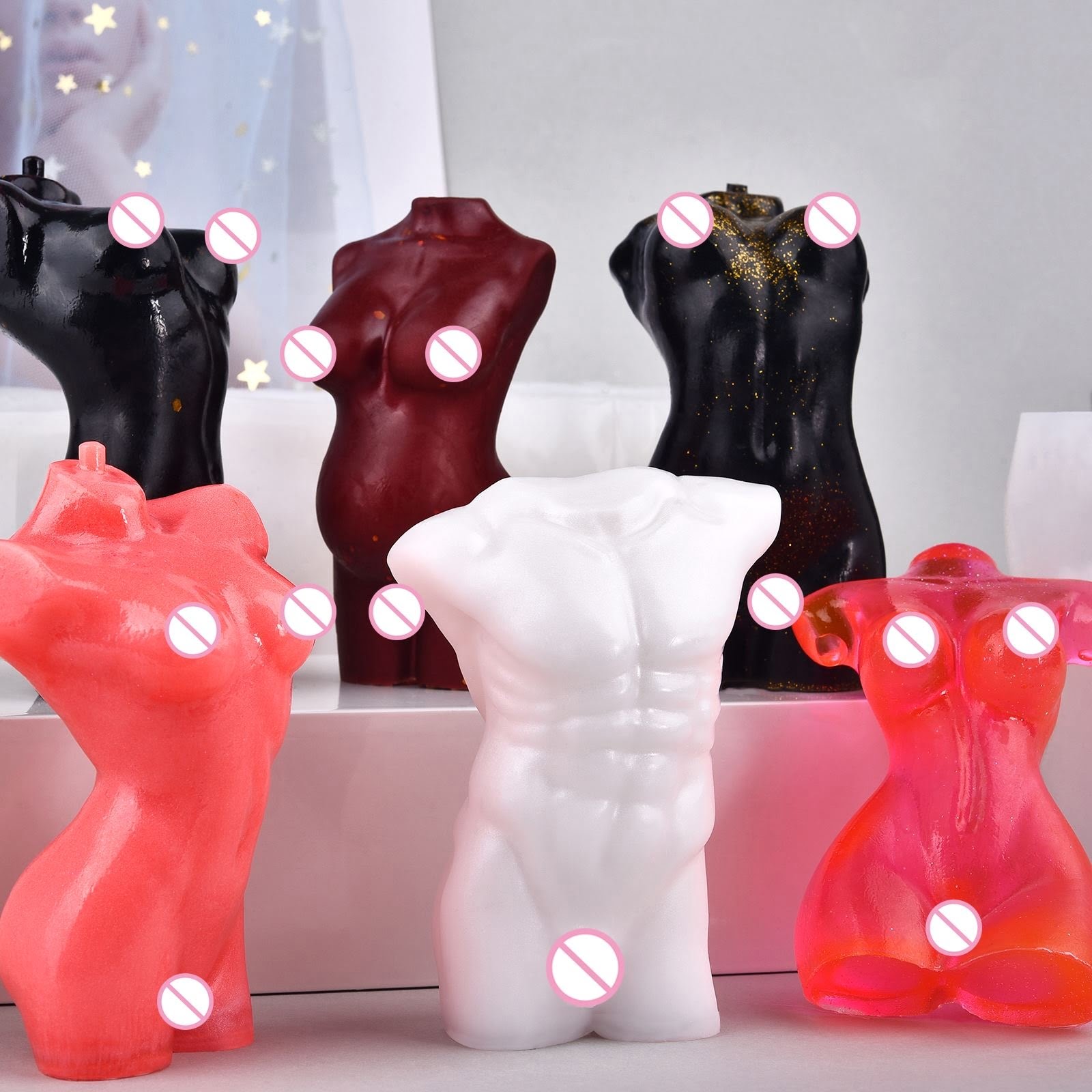When it comes to making candles, there are many factors to consider for both safety and quality. One crucial element that cannot be overlooked is the flash point. But what does flash point actually mean when making candles? In this article, we will explore the significance of flash point in candle making and why it is essential to understand and consider it throughout the process.
Flash point can be defined as the temperature at which a substance can ignite when exposed to an open flame or heat source. In candle making, understanding the flash point is vital because it helps in determining the proper handling, storage, and usage of the materials involved. Failure to consider the flash point can lead to potential hazards such as accidental fires or poor candle performance.
With different wax types available for candle making, each having its own chemical composition, flash point variations occur. For instance, soy wax and paraffin wax have different flash points due to their molecular structures and components. It is important to consider these differences when selecting your wax type as it directly affects the overall flash point of your candles.
Considering the potential hazards associated with not considering flash point during candle making, it becomes clear that a thorough understanding of this concept is essential. By taking into account the specific flash points of materials used in candle production and maintaining safe practices throughout the process, candle makers can ensure both their own safety and produce high-quality candles for consumers.
In the following sections, we will delve further into the science behind flash point in candle making, explore testing methods used to determine it, examine flammable ingredients’ impact on flash point, discuss appropriate wick selection based on flash point, and provide tips on safe storage and usage-all with a focus on ensuring safety at every step of the candle-making journey.
The Science Behind Flash Point in Candle Making
In order to understand the concept of flash point in candle making, it is important to delve into the science behind it. The flash point of a substance is defined as the lowest temperature at which it can vaporize and form an ignitable mixture in air. In candle making, this refers to the temperature at which the wax and any additional flammable ingredients used can release enough vapors to create a potential fire hazard.
The chemical composition of candles plays a crucial role in determining their flash point. Different types of wax have varying flash points due to their distinct properties. For example, soy wax generally has a lower flash point compared to paraffin wax.
This means that soy candles are more prone to igniting at lower temperatures than paraffin candles. It is important for candle makers to consider the type of wax they are using and its respective flash point when creating their products.
Additionally, other flammable ingredients such as fragrance oils and dyes can also impact the overall flash point of a candle. These ingredients often contain volatile substances that can contribute to lower flash points. Therefore, it is essential for candle makers to not only consider the flash point of the base wax, but also take into account the flash points of any additional components being added to ensure safe candle making practices.
Understanding the science behind flash point empowers candle makers to make informed decisions when choosing their materials and enables them to implement necessary safety measures during production. By considering these factors, they can ensure that their candles not only burn beautifully but also uphold high safety standards for both themselves and consumers.
Flash Point Testing
Flash point refers to the lowest temperature at which a substance can produce enough vapor to ignite in the presence of an ignition source. In candle making, understanding and considering the flash point is crucial for both safety and quality reasons. Flash point testing is a vital step to ensure that candles are manufactured safely and meet industry standards.
There are different methods used to determine the flash point of candle materials, including open cup methods and closed cup methods. The open cup method involves heating a sample of the material in an open container until it ignites, while the closed cup method uses a sealed container to prevent vapors from escaping during testing. These tests help manufacturers identify potentially flammable materials and adjust their formulations accordingly.
By conducting flash point testing, candle makers can mitigate potential hazards associated with highly flammable ingredients or combinations of ingredients. It enables them to make informed decisions about their choice of waxes, fragrance oils, dyes, and other components used in candle production. This ensures that the final product has a safer burn profile, minimizing the risk of accidents such as rapid combustion or excessive smoke.
In addition to ensuring safety, flash point testing also contributes to the overall quality of candles. The flash point affects how well a candle burns, its scent throw, and how long it lasts. By optimizing the flash point through careful ingredient selection and formulation adjustments based on test results, candle makers can create candles that offer improved performance characteristics for customers.
To maintain safe manufacturing practices and adhere to regulations related to flash point standards, it is crucial for all candle makers to incorporate flash point testing into their processes. By doing so, they can ensure that their candles meet industry safety standards while also achieving high-quality products that provide an optimal burning experience for consumers.
Prioritizing flash point testing allows candle makers to develop safe and superior candles that will be enjoyed by customers while keeping their homes secure from potential fire hazards.
Understanding Flammable Ingredients and Flash Point
When it comes to candle making, understanding the flammable ingredients used in the process and their impact on flash point is crucial. Flammable ingredients such as fragrance oils and dyes play a significant role in determining the overall flash point of a candle. This section will explore commonly used flammable ingredients in candle making and explain how their flash points affect the safety and quality of the final product.
Identifying Commonly Used Flammable Ingredients
One of the key aspects of understanding the flash point in candle making is recognizing which ingredients contribute to its flammability. Fragrance oils are a popular addition to candles as they provide pleasant scents. However, it is important to note that fragrance oils are often composed of volatile compounds that can have low flash points. These low flash point compounds have a higher likelihood of igniting when exposed to an open flame or high temperatures.
Dyes are another ingredient commonly used to add color to candles. Many dyes used in candle making are derived from synthetic materials, which can potentially have lower flash points compared to natural dyes. It is essential for candle makers to carefully select dyes with higher flash points or ensure that their usage is within safe limits.
The Impact of Flammable Ingredients on Flash Point
The flash point of a candle is influenced by both its wax base and included additives like fragrance oils and dyes. When these ingredients are combined, their individual flash points can affect the overall flash point of the finished candle. Therefore, it is crucial for candle makers to consider not only the flashing points of each ingredient separately but also how they interact when blended together.
By using flammable ingredients with lower flash points, the overall flash point of a candle may decrease significantly, increasing its potential for ignition and hazardous situations. Conversely, selecting additives with higher flashing points can contribute towards creating candles with safer performance characteristics.
It is important for candle makers to be aware of the specific flash points of the ingredients they use and adjust their formulations accordingly. By carefully considering the flash point of flammable ingredients, candle makers can ensure that their final products meet safety standards and are suitable for use in various environments.
Flash Point and Candle Wick Selection
Choosing the right wick for your candles is essential for ensuring a safe and effective burn. The flash point of a candle plays a significant role in determining which wick is most suitable for your specific candle recipe. When it comes to candle wick selection, understanding the relationship between the flash point and burn characteristics is crucial.
The Importance of Choosing the Right Wick
The flash point influences how the candle burns and affects the safety of its use. If a wick is too large or too small for the candle’s flash point, it can lead to various issues.
A wick that is too large can create excessive heat, causing the wax to melt quickly and possibly leading to a dangerous situation. On the other hand, a wick that is too small may not be able to generate enough heat to maintain an even burn throughout the entire wax pool.
Matching Wick Characteristics with Flash Point
When selecting a wick, it’s important to consider both its size and material. A larger diameter wick will produce a bigger flame and more heat, while a smaller one will result in a smaller flame that generates less heat. The flash point of your candle should guide you in choosing a compatible wick size.
For example, if you are working with a high-flash-point wax like soy wax, which typically has a lower melting point than paraffin wax, it is recommended to select a larger diameter wick that can generate enough heat to fully melt the soy wax and create an even burn pool.
Conversely, if you are using a low-flash-point wax like paraffin, it may be better to choose a smaller-diameter wick that ensures safe burning without producing excessive heat.
Importance of Compatibility
Mismatched wicks can not only cause safety issues but also affect the performance of your candles. Incompatibility between the flash point and the wick selection may lead to uneven burning, excessive soot, tunneling, or poor fragrance throw. Therefore, it is essential to consider the flash point of your candle and select a wick that is compatible in terms of size and burn characteristics.
By selecting the right wick based on the flash point of your candle, you can ensure a safe burn and optimal performance. It is recommended to conduct test burns with different wick sizes and materials to determine which combination best suits your specific wax formula and desired burn characteristics. Remember, choosing the appropriate wick not only enhances safety but also improves the overall quality of your candles.
Considering Flash Point in Candle Storage and Use
When it comes to candle making, flash point is not only important during the production process, but also in the storage and use of candles. Understanding the flash point of candles is crucial for ensuring safety and preventing accidents. In this section, we will explore the significance of flash point in making-sweden/” target=”_blank” rel=”follow noopener”>candle storage and use, as well as provide tips on proper candle handling based on their flash points.
Proper storage of candles is essential to maintain their integrity and prevent any potential hazards. The flash point of a candle determines its susceptibility to ignition when being exposed to an open flame or heat source.
Candles with a lower flash point are more likely to ignite and cause accidents if not stored correctly. Therefore, it is important to store candles away from sources of heat or direct sunlight, which can significantly increase their temperature and risk reaching the flash point.
In addition to storage, understanding the flash point of candles also plays a crucial role in determining safe usage practices. Candles with a higher flash point are generally safer to use as they have a higher resistance to accidental ignition. On the other hand, candles with a lower flash point require more caution during use. It is recommended to always keep an eye on burning candles, especially those with a lower flash point, and keep them away from flammable materials.
To summarize, considering flash point in the storage and use of candles is vital for maintaining safety and preventing accidents. Remember these key points:
- Store candles away from heat sources or direct sunlight.
- Monitor burning candles closely, especially those with a lower flash point.
- Keep burning candles away from flammable materials.
- Handle all types of candles with care, regardless of their flash points.
By following these guidelines, candle enthusiasts can ensure not only their own safety but also that of others around them while enjoying the beautiful ambiance that candles bring.
| Flash Point | Storage Recommendations | Usage Recommendations |
|---|---|---|
| High Flash Point (e.g., above 200°F) | Store in a cool, dry place away from heat sources and direct sunlight. | Safer to use; monitor closely, but less prone to accidental ignition. |
| Low Flash Point (e.g., below 150°F) | Store in a cool, dry place away from heat sources and direct sunlight. Take extra precautions due to higher risk of accidental ignition. | Require more caution during use; keep away from flammable materials; monitor burning candles closely. |
Regulatory Requirements
Candle making is a craft that requires not only creativity and skill but also adherence to certain regulatory requirements. One important aspect of candle making regulations is the consideration of flash point. Flash point refers to the temperature at which a substance gives off enough vapor to ignite when exposed to an open flame or spark. In the context of candle making, understanding and complying with flash point regulations is crucial for ensuring consumer safety.
The use of flammable materials in candle making can pose potential hazards if not handled properly. Flammable ingredients such as fragrance oils and dyes are commonly used to enhance the scent and appearance of candles, but they can significantly impact the overall flash point of the finished product. It is essential for candle makers to be aware of the flash points of these ingredients and ensure that their chosen formulations meet safety standards.
Regulatory agencies, such as the Consumer Product Safety Commission (CPSC) in the United States, have established guidelines and regulations regarding flash point limits for candles. These regulations typically aim to ensure that candles are safe for consumers to use by setting maximum allowable flash points. By complying with these regulations, candle makers can demonstrate their commitment to consumer safety and avoid potential legal issues.
In order to comply with regulatory requirements related to flash point in candle making, it is essential for candle makers to test their products using reliable methods. Flash point testing can be conducted through various techniques, including open cup tests, closed cup tests, and automated instruments. These tests help determine whether a specific candle formulation meets safety standards by measuring its ignition temperature.
| Regulatory Agency | Maximum Allowable Flash Point (°C) |
|---|---|
| Consumer Product Safety Commission (CPSC) | 93 °C (200 °F) |
| European Candle Association (ECA) | 100 °C (212 °F) |
| Australian Competition and Consumer Commission (ACCC) | 65 °C (149 °F) |
Complying with flash point regulations not only ensures consumer safety but also contributes to the overall reputation of the candle making industry. By putting safety first and respecting flash point requirements, candle makers can mitigate the risk of accidents and build trust with their customers.
It is important for candle makers to stay updated with the latest regulations from relevant agencies and continuously evaluate their processes to ensure compliance. By doing so, they can confidently provide high-quality and safe candles to consumers worldwide.
Flash Point and Candle Making Tips from the Experts
In the world of candle making, understanding flash point is crucial for ensuring safety and producing high-quality candles. To shed more light on this topic, we interviewed industry experts and experienced candle makers to gather their insights and recommendations on working with flash point effectively.
According to our experts, one important tip when it comes to working with flash point is to always follow the recommended guidelines provided by your wax supplier. Different types of waxes have different flash points, so it’s essential to choose the appropriate wax for your specific candle-making project. Using a wax with a flash point that is too low can increase the risk of fire hazards during the production process and when burning the candles.
Another expert tip is to be mindful of the fragrances and dyes you use in your candles. These materials often have different flash points than your base wax, so it’s important to consider their impact on the overall flash point of your final product. Choosing fragrance oils or dyes with higher flash points can help maintain a safe balance in your candles.
Additionally, proper wick selection is crucial when considering flash point in candle making. Experts suggest choosing wicks that are compatible with the flash point of your candle. Using a wick that burns too hot for a low-flash-point candle can lead to excessive heat release, increased chance of flammability, and decreased burn time. On the other hand, using a wick that burns too cold for a high-flash-point candle may result in poor scent throw and excessive sooting.
By following these tips from industry experts, you can work with flash points effectively in your candle making endeavors while prioritizing safety and producing high-quality products. Remember to always conduct thorough research on the materials you use and adhere to any regulations set forth by governing bodies for candle making safety. Ultimately, by respecting and understanding flash point, you can create beautiful candles while keeping yourself and others safe.
Conclusion
In conclusion, understanding and respecting the flash point in candle making is crucial for ensuring safety and quality in the production process. Throughout this article, we have explored the definition and significance of flash point, the science behind it, as well as its implications on various aspects of candle making.
By considering flash point, candle makers can mitigate potential hazards and prevent accidents. The chemical composition of candles and their wax types play a significant role in determining flash point. It is essential to conduct thorough flash point testing to guarantee safe and high-quality candle production. Additionally, understanding how flammable ingredients affect the overall flash point allows candle makers to make informed choices when selecting materials.
Flash point also influences wick selection, as choosing appropriate burn characteristics according to the candle’s flash point is crucial for safety and performance. Moreover, consumers must be educated about proper storage, handling, and usage of candles based on their respective flash points to prevent fire incidents.
Complying with regulatory requirements related to flash point is equally important in ensuring consumer safety. The utmost priority should be given to following these regulations to guarantee that candles meet safety standards.
Frequently Asked Questions
What is the best flash point for candles?
The flash point for candles refers to the minimum temperature at which the vapor of a candle’s fuel (typically wax) can ignite when exposed to an open flame or spark. It is important to note that the best flash point for candles depends on several factors, including the type of wax and wick used, as well as the intended use and design of the candle.
Generally, a lower flash point may result in a more easily ignitable candle, while a higher flash point may make the candle less likely to ignite accidentally. Candle manufacturers consider these factors along with safety regulations in determining the appropriate flash point for their products.
What is the flash point for wax?
Wax itself does not have a specific flash point as it is a generic term for various types of solid fats or oils that are used in making candles. Different types of waxes, such as paraffin wax, soy wax, beeswax, and others, have their own specific properties including different melting points and chemical compositions.
Each type of wax has its own unique characteristics that influence its handling, burning behavior, and appropriate usage guidelines. Therefore, it is more accurate to determine the flash point based on the specific type of wax being used rather than considering wax as a single entity.
What is the flash point for essential oils?
Essential oils are highly concentrated volatile substances obtained from plant sources through various extraction methods. Due to their aromatic nature and potential flammability, they do have individual flash points depending on their chemical composition. Flash points for essential oils generally fall within a wide range but are typically below 100 degrees Celsius (212 degrees Fahrenheit).
It is essential to determine the accurate flash point of each essential oil before handling or using them near an open flame or heat source. This information helps ensure safe usage and storage practices since oils with low flash points can be highly flammable if exposed to high temperatures or ignition sources without proper precautions.

Welcome to my candle making blog! In this blog, I will be sharing my tips and tricks for making candles. I will also be sharing some of my favorite recipes.





